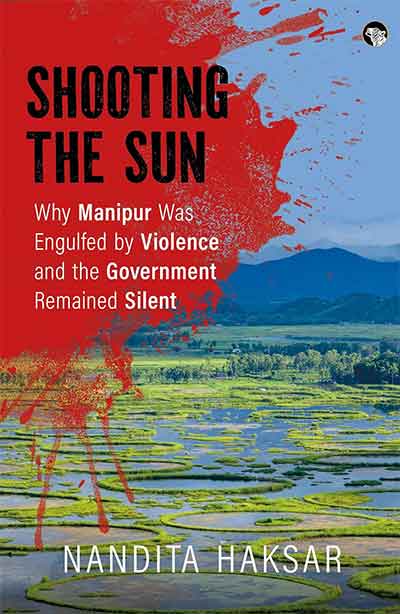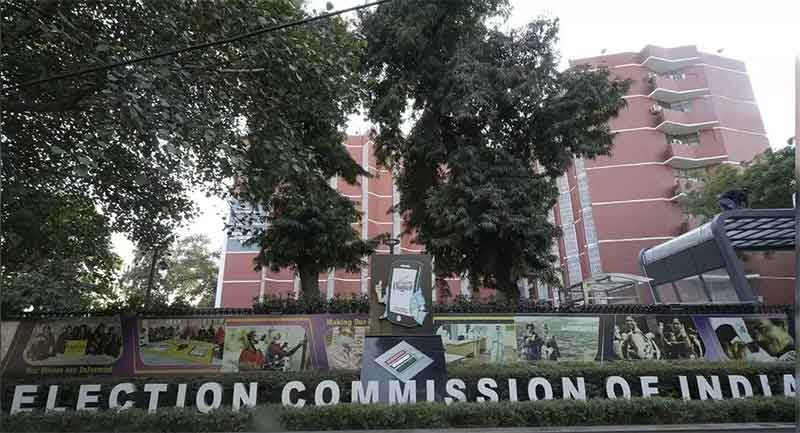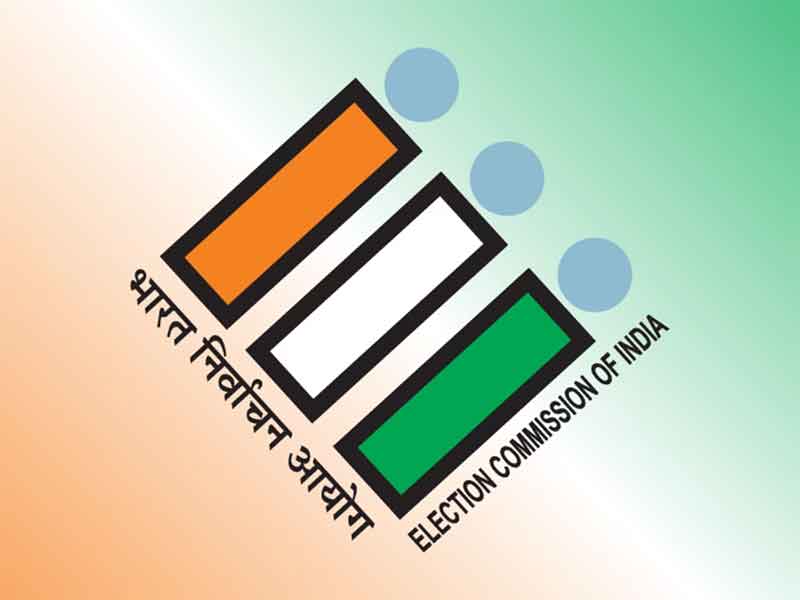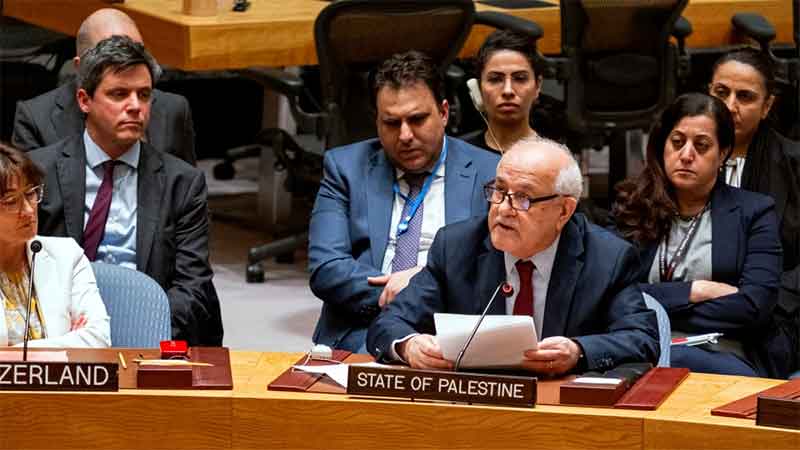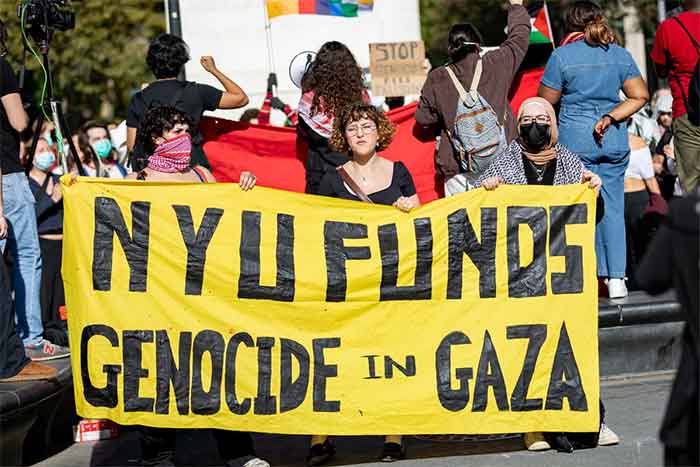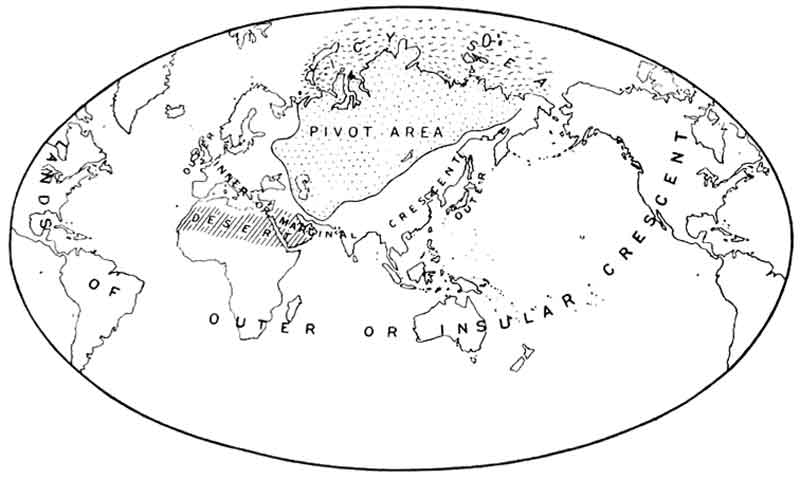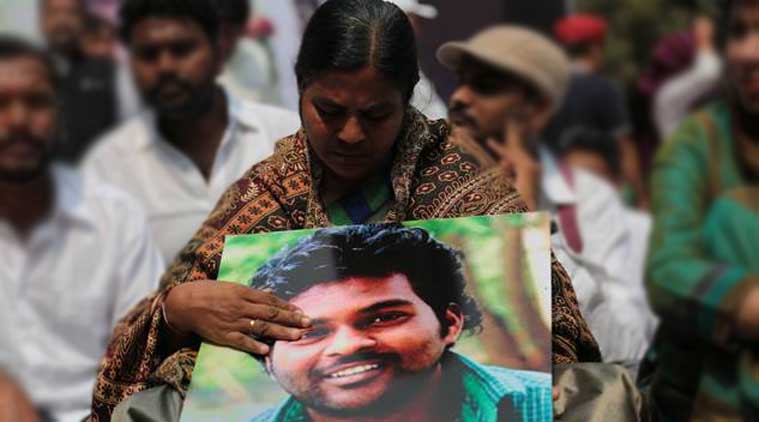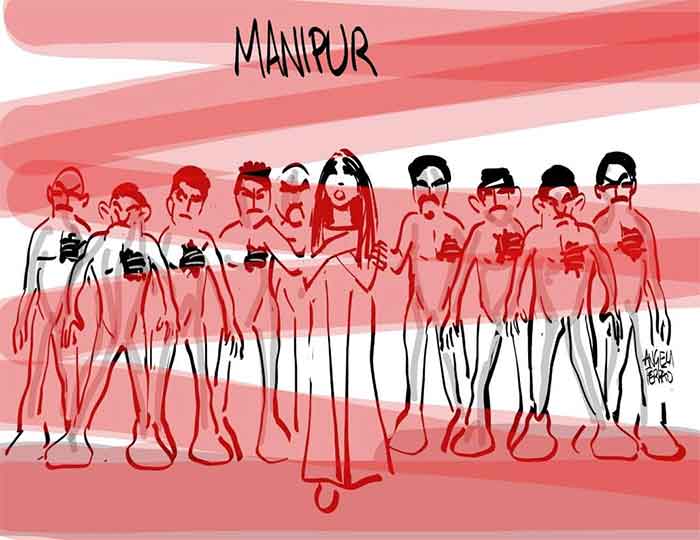
On July 19, 2023 a heinous and unforgivable incident made it to the headlines. In connection to the ensuing ethnic clashes in Manipur, an incident of two Manipur tribal women being paraded naked by a mob in broad daylight came out in public only after two and a half months when a video footage of the same went viral. Though the news is stale, the questions aren’t.
The north-eastern state of Manipur has been burning since May 3, 2023 after the All Tribal Students Union Manipur (ATSUM) held a solidarity march in all districts opposing the recent Manipur High Court order, which had asked the Manipur State government to send a recommendation to the Centre regarding the demand to include the Meitei community in the Scheduled Tribes (STs) list. It was on the very next day on May 4, 2023 that this shocking incident had occurred in the B Phainom village while the women of the Kuki-Zomi community were being escorted to safety by the police van from where they were abducted by a mob and stripped, paraded and gang-raped later. While the episode had occurred in the Meitei-dominated valley district of Thoubal, the victims later filed a complaint at a police station in Kangpokpi district where a zero FIR was registered and the case forwarded to the police station concerned in Thoubal. According to their complaint, while the video shows only two women, there was another woman in her 50s who was also compelled to remove her clothes by the mob.
This deafening institutional silence over the last two months regarding a flagrant act of human rights violation is both harrowing and concerning. The survivors have told The Wire that the Manipur police had been present at the scene of the crime but did not come to their rescue. Internet has been shut down in Manipur ever since May 3 which is why the video could not be made public immediately. The glaring fact is how these survivors have not just been wronged by the assaulters but also by the government which has been reticent until the incident aroused public outrage.
A Zero FIR was a Criminal Law Amendment by Justice Verma’s Committee after the incident of the Nirbhaya Rape Case. It is a protective tool that mandates the police to register an FIR even if the incident occurs in the area that does not fall under the jurisdiction of the police station. The objective was to prevent delay and make the police bound to conduct investigation. However, this time in Manipur the Zero FIR has been filed even though the incident occurred well in front of the eyes of four policemen who were sitting in the car witnessing the violence as reported by a survivor. Further, the Zero FIR had charges of rape and murder against “unknown miscreants” whereas the identity of the suspects can be affirmed right from the video footages. Thus, the tool that was supposedly meant to ensure speedy justice has been tweaked by the authorities to aid the perpetration of injustice. This is not the first instance of the same and it is highly disturbing how the government has been turning blind eye to such ignominy over the last two months. It also raises the question of how many more such incidents of human rights violation have gone unreported or purposefully neglected by the authorities ever since the onset of the violence. As evidence of the same, a few more narratives of the victims of sexual violence in Manipur has come into the forefront over the week.
It has also been later reported that two women activists and the North American Manipur Tribal Association (NAMTA) had informed the National Commission for Women (NCW) about this incident and five others over a month ago on June 12 appealing for suo moto cognizance of the matter. However, no action was taken in this regard.
Sexual harassment of women has always been used as a weapon of war to assert power over the enemy. During times of conflict multiple binaries are constructed; not only is ‘masculine’ contrasted to ‘feminine’ within a group and ‘us’ contrasted to ‘them’ between groups, but ‘our women’ are contrasted to ‘their women’ and ‘our men’ to ‘their men.’ [Alison, 2007] This is because women are perceived to have a significant role in the construction and maintenance of an ethnic group owing to their roles as biological reproducers, cultural transmitters and signifiers of an ethnic group. As Ruth Seifert puts it, the female body is ‘a symbolic representation of the body politic’ and rape of women is ‘the symbolic rape of the body of [the] community.’ [Seifurt, 1994]
History bears testimony to the fact how women and girls have often been targeted in wartime and have been victims of sexual violence. This sordid episode in Manipur is a recurrent example of how pre-existing patterns of discrimination against women and girls exacerbate in situations of conflict and instability. However, an air of silence has always lingered whenever it comes to instances of sexual assaults in conflict situations. This silence is not just out of the burden of honor and shame that the society attaches to women even if it violates their basic human rights. But this time it is also the system which has enabled the perpetrators by not taking actions against them and choosing to remain silent. The protective tools like the Zero FIR have been used against the cause of the survivors, the internet shutdown has hushed the episodes of injustice, and therefore the onus lies with both the perpetrators and the government who are at par when weighed on the same scale. Although the perpetrators have been arrested overnight after the leaking of the video, nothing can ever bring justice to the trauma that the survivors had to undergo because their narratives had been silenced institutionally for so long. But the question remains, ‘Why the Silence?’
References
- Alison, M. ‘Wartime Sexual Violence: Women’s Human Rights and Questions of Masculinity’. Cambridge University Press. Review of International Studies , Jan., 2007, Vol. 33, No. 1 (Jan., 2007), pp. 75-90
- Seifert, Ruth. ‘War and Rape: A Preliminary Analysis’, in Alexandra Stiglmayer (ed.), Mass Rape: The War against Women in Bosnia-Herzegovina (Lincoln, NE: University of Nebraska Press, 1994), pp. 62-4
Preeti Saha is a post-graduate from Presidency University, Kolkata and currently working as a Research Assistant at PAAR (Prison Aid + Action Research).



